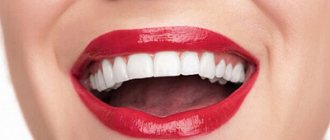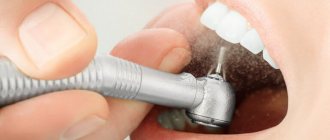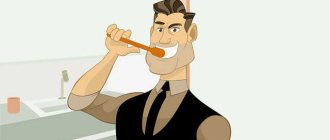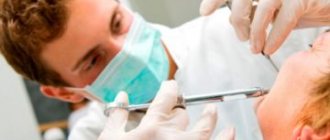It is a pity that not everyone in our world is naturally blessed with beautiful and straight teeth. Many people resort to considerable effort and great expense in order to have a more or less aesthetic smile. After all, uneven teeth are not only unsightly in appearance, but also cause serious changes in the bite, which in turn leads to various diseases. Of course, only an orthodontist can perfectly straighten the teeth, for example, by installing a braces system. People often ask whether it is possible and, if so, how to make braces at home?
More recently, people were embarrassed to wear braces. They considered this system ugly and unaesthetic. Therefore, even when talking, they tried to cover their mouth with their hand. Today you can notice completely different behavior. Braces are considered not only a necessary device for straightening teeth, but are also trendy devices that add a certain zest to a person. Now people are proud of the braces on their teeth and show them off to everyone.
Today you can often find a variety of information about home teeth straightening. Let's try to figure out how this is done.
To be objective, let’s say right away that it is possible to create braces at home, but you won’t be able to correct your teeth with home braces, but you can add some shock value to your image. Homemade braces are good to wear to a disco or to a photo shoot.
Bracket - what is it?
In dentistry, this is the name for a fixed dental prosthesis intended for orthodontic purposes. Each such device serves a specific purpose, predetermined by the doctor. It can straighten crooked teeth and hide the voids between them. They often use additional devices such as locks, springs or elastic chains. This allows you to give your teeth the correct shape.
Important: Self-regulating mechanisms are used today to fix braces.
Instead of ligatures, as before, elements for fixation are used. Thus, much less time is spent on their installation. And the main thing is that if fixation is lost, it can be corrected independently. Fast and painless.
The principle of operation of bracket systems
Human teeth can move independently, and this happens throughout the entire life cycle. They are not firmly attached to the jaw. Displacement of teeth can occur during their eruption, during treatment, due to certain efforts, especially prolonged pressure. Such loads are also possible under normal conditions. That is, when eating and chewing solid food, a gradual displacement of the teeth is observed.
Over time, the dentition loses its shape, the teeth become crooked, and gaps appear. All this can be corrected only by installing braces. They allow you to restore the position of your teeth and return them to their original position. This is possible thanks to directed pressure. But it must be constant and long-lasting. With the help of braces, the tooth is pressed into the bone or, on the contrary, squeezed out. They are also able to change the inclination of teeth in any direction.
If there are gaps between your teeth, dental retainers will fill them. They will tighten the teeth, and if the retainer is worn for a long time, this condition and location will become permanent. That is, the problem will be completely eliminated. Braces are an effective method of dealing with any changes in the position of teeth in the human oral cavity.
Reviews
There are both enthusiastic and negative reviews on the Internet.
Some people used the devices to create a Halloween costume, while others damaged the mucous membranes of their mouth due to improper use.
In the comments to the article, you can share your reviews about fake braces.
If you find an error, please select a piece of text and press Ctrl+Enter.
Tags: braces vestibular braces
Did you like the article? stay tuned
Previous article
Features of restoring damaged teeth with half-crowns
Next article
Unique Sia braces – the orthodontic art of Italy
General idea about fake braces
Fake braces are structures that look like an orthodontic system. They are made independently or bought ready-made.
Plastic and various metals are used for manufacturing. False structures are used to create a fashionable image, at themed events, and for photo shoots.
History of origin
For the first time, fake braces began to be worn in Southeast Asia. The fashion for them was introduced by such stars as Andiga Kangen, Earn The Star, Gwen Stefani. They are also associated with the aggressive “dek wehn when” motorbike subculture.
Counterfeit products are designed to create the image of a rich person. For example, the cost of real structures in Bangkok is more than $1,000. This amount is equal to half the annual income for most residents of the country.
A huge demand for products has created a black market. On it, fake systems cost about $100.
The fakes turned out to be life-threatening. After the death of teenagers in Thailand, their sale is prohibited by law.
Violation is punishable by 6 months in prison and a $1,600 fine.
But some enterprising young people are not afraid of statistics, and they resort to creating beautiful dental jewelry on their own.
How does the dentist see the situation?
As a rule, a professional with extensive experience in braces treatment does not provide one-time services. At best, an assistant can accept a patient from another clinic to perform some types of orthodontic work.
A qualified specialist is no less interested in the quality result of the treatment he has begun than the patient himself. It is important for him to comprehensively examine the patient, agree on the goal with him, perform complex calculations, develop a correction program and implement it with good results. Correcting dentofacial anomalies is not limited to just replacing ligatures and arches, but requires high-quality implementation of pre-planned complex algorithms; the patient creates many problems.
- Each orthodontist has his own approach to the method of eliminating anomalies. And it won’t be easy for him to immediately interfere with someone else’s program.
- Any doctor prefers some fixed orthodontic structures over others. Ligature and self-ligating brace systems differ not only in the material of the clasps, but also in the brand of the manufacturer. Each of several dozen systems has its own characteristics, which are not so easy to understand for a doctor who has not dealt with them. If, for example, your teeth are wearing Clarity Advanced braces , the doctor will have to carefully understand how their parameters are related to someone else’s treatment program.
There is one more unpleasant moment. It is no secret that a serious conflict is often hidden behind the rupture of an established relationship between the attending physician and the patient. And the new orthodontist, who works a lot and fruitfully, of course, doesn’t want to unravel it.
Instructions for making braces
How to make braces? Not very difficult. You can make devices from available items.
Here is a list of materials that will be needed during the process:
- Large size paper clips.
- Wire.
- Paper plate or other convenient surface.
- Sandpaper.
- Super glue.
- Pliers.
- Orthodontic wax.
- Beads (preferably different colors).
- Earrings in the shape of a butterfly.
So, let's describe the technology of how to make braces at home.
Braces at home from a paper clip
- Bend the object into a straight line.
- Make the paperclip into the shape of a tooth row, that is, bend it in a U-shape.
- Go to the mirror and stretch your mouth into a smile. Assess how many teeth are visually visible. By counting them, you will find out how many beads you will need in the future.
- Take the beads and attach them to the paperclip. Remember to maintain the correct distance between objects, equal to the distance between the teeth. The beads should be located directly in the center of the tooth. Now raise the paperclip to your teeth and smile widely. Evaluate what has been done.
- Place the paper clip on the paper surface and glue the beads to the wire with non-toxic glue. The beads should stick very well to the paper clip. There should be enough glue. During gluing, the beads and paper clip should not stick to the paper surface. If excess glue suddenly forms, it must be carefully removed from the wire. Average holding time of a glued structure: 4 weeks.
- Make the beaded paperclip into an L shape using pliers. Make folds on both sides. At the same time, try to achieve a level base. Be patient and do the folds slowly.
- Take orthodontic wax (you can find it in pharmacies.) Make two balls from it. Thread the ends of your homemade braces through these balls. For fastening, in addition to wax, you can use chewing gum.
- The structure is ready. Secure it to your teeth for a comfortable feeling.
Sequence of making wire braces
- Take silver craft wire. Give it a U shape.
- Make hooks from the ends of the wire for fastening using pliers. In this case, there is no need to bend them until the very end.
- Choose a suitable elastic band. Find a rubber band that is not too thick and is long enough that it stretches across all the front teeth.
- Attach the elastic band to the wire. Perform movements carefully so as not to damage the structure. Hang the elastic on one hook, pull it tight and secure it on the next side. Squeeze the hooks using pliers. The elastic band should hold very tightly.
- Take small earrings that look like a butterfly. Number of earrings needed: 6. Attach this number. In this case, the back of the earrings should be on the wire.
- Make a fitting to align the butterflies. After assessing the result, make the necessary movements so that the earrings are in the center of the teeth.
- Prepare brackets for the bottom row. The execution sequence differs little from creating braces for the top row. The only thing you won't need to do is attach butterfly earrings. The quantity made will be enough for the aesthetic appearance of the structure.
This is interesting: Microimplants or orthodontic microscrews: how mini implants are used, reviews
Self-production
Method 1
To make it you will need a paper clip or wire, orthodontic wax, foil, sandpaper. The structure is prepared in the following sequence:
- Cut off the required section of the wire or unbend the paper clip.
- They are formed into a “horseshoe”.
- Smooth the ends with sandpaper and wrap with insulating tape.
- Balls are formed from small pieces of foil or beads are taken.
- Attach them to the main element.
- Orthodontic wax is applied to the created structure and pressed against the teeth.
Note! An incorrectly sized wire will damage soft tissue.
Method 2
The second method uses a paper clip and cheese wax. Follow these steps:
- Remove the wax from the packaging of Babybel cheese.
- Give it a semicircular shape and place it on the dentition.
- After hardening, it is removed and one side is treated with non-toxic glue.
- Let the glue dry.
- Decorate the structure at your own discretion.
- The paper clip is cut into four parts and placed in wax.
Important! All elements from which the devices are supposed to be made must be sterile and non-sharp!
Aliexpress and Jum sell fake braces of various designs - with flowers, Mickey Mouse, and Hello Kitty. They are made of clear plastic and are compatible with autoclave or cold sterilization.
Their minimum cost is $1. You cannot eat, drink or run in such devices. Be careful not to swallow small parts.
Making Tips
You need to be careful when creating braces at home. During the manufacturing process, it is better to follow the tips listed below:
- The parts used must be clean. An infection can easily be introduced into the oral cavity and subsequently treated for complications.
- Wire, beads, earrings and paper clips should not contain sharp ends. Otherwise, you may seriously injure your mouth area.
- The fastening of parts of braces must be done conscientiously. Small parts that fall off can get into the throat and cause suffocation.
- If homemade braces are made by a child or teenager, the procedure must be performed under the supervision of elders.
- Be sure to remove your braces from your mouth when eating.
- Don't waste your time. Treat the process meticulously and painstakingly.
- When doing this, try to make your homemade structure look like the real thing.
- The shape of the paperclip or wire should not contain folds or irregularities. The surface of the product should look like a clear letter “U”.
- Before bending the edges, you need to clean the tool and apply sandpaper.
- Remove braces when eating.
- It is better to eat before installing homemade braces.
- You should be careful when bending a paper clip in your mouth because you can very easily injure yourself.
- When trying on the design, try not to choke on the parts of the braces.
If you don’t want to make braces yourself, you can buy them in a store and put them on your teeth. But be aware that purchased braces greatly cover your teeth.
Pros and cons of aligners and braces in use
Comparing aligners and braces allows you to understand the question of which technology is best to choose in your case. Each technology has its own advantages and disadvantages, and for convenience we will summarize them in a table.
| Comparison options | Aligners | Braces |
| Appearance | Transparent aligners | Locks. glued to the teeth, and a metal arch connecting them |
| Color | Transparent | Any |
| Material | Polymer | Metal/Polymer/Ceramics |
| Allergenicity | No | Yes |
| Are they suitable for children? | No | Yes |
| 3D modeling of jaws on a computer | Yes | No |
| Discussion with the doctor of the result and patient participation in treatment | Yes | No |
| Preparation time | 7 days | 1-2 days |
| Installation time | 45-60 minutes | 3-6 hours |
| Taking impressions before installation | Oral scan + impressions | Yes |
| Treatment speed | 30% faster | Slower |
| Impact mechanics | Simultaneous rotation and displacement of the tooth in the desired direction due to tight coverage | Consecutive displacement in one direction or another and rotation |
| Risk of caries | No | Yes |
| Possibility of enamel remineralization | Yes | No |
| Possibility of injury to the mucous membrane | No | Yes |
| Frequency of visits to the doctor for correction | Every 4-6 weeks | Every 2 weeks |
| Dietary restrictions during treatment | Almost not | Yes |
| Possibility to remove the structure for eating or cleaning | Yes | No |
| Food getting stuck between teeth | No | Yes |
| Bad breath after eating | No | Yes |
| Difficulty in oral hygiene | No | Yes |
| The need to brush your teeth after every meal | No | Yes |
| The need to use dental floss and toothpicks | If necessary | Necessarily |
| Using a special toothbrush | No | Yes |
| Toothbrush lifespan | Standard | Short (due to increased wear) |
| Opportunity to see results before treatment begins | Yes | No |
| Need to be worn constantly | No | Yes |
| Psychological comfort and self-esteem | Yes | No |
| Aesthetics of appearance | High | Low |
| Feeling of discomfort | No | Yes |
| Possibility of pain at the beginning of treatment | No | Yes |
| Impaired diction | Almost not | Yes |
| Protecting teeth from injury | Yes | No |
| Ease of installation and wearing | Yes | No |
| Possibility of self-replacement | Yes | No |
| Possibility of peeling off | No | Yes |
| Disruption of the usual way of life and forms of communication | No | Yes |
As can be seen from the above comparison, aligners are more convenient in almost everything. Braces cause more discomfort, require changes in the usual lifestyle and diet, and, in fact, the only case when braces are preferable is when the patient is a child. Therefore, when choosing between braces or aligners, according to the orthodontist, it is better to prefer aligners.
The principle of operation and fixation of braces
Braces are structures that apply measured pressure on the teeth. Teeth do not remain motionless throughout life, and maintaining their correct position depends on many factors (proper nutrition, eating hard foods, gum health). Inflammatory processes weaken the tissues of the oral cavity, and teeth can move.
Various loads over time lead to the fact that individual units rotate, tilt, and shift relative to their original position. At the same time, gaps appear between the teeth, in which food debris accumulate and pathogenic microorganisms multiply, which leads to the development of caries and inflammatory processes in the gums.
To correct the situation, the coronal part must be affected in a certain direction. Under the influence of a constant force, the unit begins to move. The bone in front of the tooth gradually softens, allowing the root to take a new position. The tooth “moves” to a new location.
This process can take up to several years, which is why people often resort to braces. These fixed structures are designed to correct the position of incorrectly positioned teeth.
Small plates of braces are glued to each tooth. Each part has a groove and a special arc passes through it. It is given the desired shape of the dentition. Because the teeth are in the wrong position, the arch becomes bent. Trying to return to its original shape, the arc puts pressure on the incorrectly growing units, forcing them to move.
The pressure force is approximately equal to that with which the blood presses on the capillaries of the periodontal ligament. Too much pressure leads to compression of the capillaries, stopping cellular activity. Insufficient pressure will not cause the units to move.
Most brace systems are of the vestibular type. In such designs, braces are attached to the front wall of the crown; they are visible when talking and laughing. There are also lingual braces, the plates of which are attached to the tooth from the inside. This design is almost invisible, but creates discomfort in the oral cavity, because... the tongue is constantly in contact with the device. Temporary disturbances in diction are possible.
The arch is attached to the braces using ligatures - special locking devices. In a lingual design, the system clasps onto the last tooth. In this case, the patient will not be able to see, much less get the ligature on his own.
Reasons for braces coming off teeth
Braces take up significant space in the mouth. It takes time to get used to them - a month is considered the minimum period. To ensure that the braces adhere firmly to the surface of the crowns, they are secured with special glue. After installing the structure, the doctor warns the patient about the limitations associated with treatment with braces. The safety of braces depends on following these recommendations. Why braces can come off:
- during the first stage of connection, devices may be subject to pressure from incorrectly positioned units;
- a bracket fell off - it was all due to careless manipulations with a toothbrush;
- if the bracket came off, the food consumed was too hard or sticky;
- the device may fall off when trying to remove food stuck between the teeth or under the arch;
- The safety of the structure is affected by changes in the dentition, gradual correction of the bite, which can also cause a violation of integrity, and the bracket will fall off.
Consequences of violation of system fixation
What to do if the plate comes off? If the brace system breaks down, efforts aimed at straightening the row or correcting the bite will be in vain. The design on the teeth will change the pressure and direction of action, which will cause harm to the dentition.
Do not be alarmed if you find a part of the structure that has come off in your mouth; you should immediately consult a doctor. It will help restore the integrity of the system and tell you what to do next so that the situation does not repeat itself.
If you can’t see an orthodontist, you can try to repair the broken bracket yourself. There are 2 options for this repair: glue the plate using special wax or remove the lock.
The case when the arch broke in the mouth and a piece of it was swallowed requires special attention. In this case, you should urgently see a surgeon, take an x-ray and determine whether surgical intervention is indicated.
How to fix braces at home?
When it is not possible to immediately see a dentist, you can temporarily repair the damage at home. If a ligature system is installed in the mouth, the ligature must be released using small tweezers or a toothpick. The released ligature will allow the bracket to be removed.
To remove the ligature-free system, carefully unfasten the locking lock. Removed braces must be retained. If you consult a doctor in a timely manner, the structure may be able to be replaced. However, in most cases the system will have to be manufactured anew, because in a re-attached device, the load on each unit will change, and the fixation will not be secure enough.
Unstuck braces can be glued back using special wax, which specialists use to attach plates to crowns. Orthodontic wax can be obtained from your doctor during the installation of the system. Before gluing the fallen off plate, the crown should be wiped dry with a cotton swab or ear swab. However, it is important to remember that if the bracket has separated from the last unit, you should not do anything on your own without the help of an orthodontist.
If you cannot open the lock or remove the ligature yourself, you should not use strong force. It is better to leave everything as it is and consult a doctor as soon as possible. The less time passes from the moment of breakdown, the more likely it is that the defect can be eliminated without making a new structure.
Procedure for installing braces
How braces are installed, whether it hurts or not, how long the procedure takes - most often these are the questions that concern those who decide to fix their smile. Orthodontists remind dental-phobic patients that beauty sometimes requires sacrifice, so you will have to be patient a little.
Also, be patient. Installing a brace system on the upper and lower jaw is not a quick task; you will need to sit with your mouth open for 1.5 - 2 hours. This is precisely what worries patients the most, and not the fact that it will hurt. An orthodontist’s work is responsible and he doesn’t like to rush. Get distracted and your new smile may be at risk. An error of even 1 mm is critical! One by one, the doctor glues brackets to the teeth, which are then connected with a metal arch. This is a guide for crooked teeth, it shows the place to which they should move. Don’t believe those who say that installing braces is very painful. The stage is responsible, but painless.
Contraindications for installing braces
- If there are problems with the gums, installation of a braces system is possible only in the absence of an inflammatory process.
- Caries is also considered a temporary limitation for the fixation of orthodontic appliances.
- Poor oral hygiene is a serious barrier to starting treatment. If a person doesn’t brush his teeth well, then braces will only make the situation worse.
- An increased tendency to caries, coupled with poor hygiene, is a contraindication to fixing braces.
How often do archwires on braces be changed?
During the treatment process , the arch on the dentition replaced rigid fixation is required. On average, there are only 3 planned replacements: at the beginning, middle and end of treatment.
Important! An individual treatment plan, the degree and type of defect determine how many times replacement is necessary.
The structure can also suddenly break down due to improper care, use, installation or poor quality material. If the arc is broken, it is no longer suitable, in which case an unscheduled replacement is necessary.
procedure does not take much time and is painless . The dentist opens the clasps on the braces and removes the old wire from the grooves. Instead, a new one is installed in the grooves and then secured with locks.
Planned replacement usually involves installing new arches on two jaws . In case of an unscheduled one , only the one that is out of order is replaced.
Planned manipulations
At the beginning of treatment, weak and thin products with a round cross-section are used. Due to their elasticity and plasticity, they seem to prepare the teeth for the upcoming therapy.
During the period of using power elements, the patient may not feel any visible discomfort. Nickel-titanium products are used for these purposes.
Then the models are replaced by elements with a wider cross-section , increasing the load. They allow you to move not only the supragingival part of the teeth, but also the roots. With these products, the active part of bite treatment begins.
At the end of the course, square-section products are used . Thanks to them, it is possible to achieve final alignment of the bite and correct position of the teeth.
Replacing power products during therapy is not used only in some types of systems and for small bite defects.
How to insert an archwire into the last bracket
In patients, the archwire can often fly out of the last bracket, for example, while eating. In this case, you can insert it back yourself .
The lock on the last bracket never opens , so the part that came out will need to be inserted. Bend strongly and carefully insert it into the hole in the bracket lock (similar to threading a needle), using tweezers. If the arch is too rigid , you will need the help of another person, as you will need to apply a lot of force.
Important! If you are unable to put the arch in place yourself, you should contact an orthodontist at your nearest dental clinic . The specialist will very quickly restore the functionality of the braces system.
If the piece that came out could not be inserted and it began to rub orthodontic wax will help in this case .
If the archwire did not fly out of the last bracket
If the archwire did not jump out of the last bracket, then you will no longer be able .
In this case, you must definitely contact a specialist as quickly , since the incorrect position of the system will lead to distortion of the correction results and possible prolongation. To avoid injury, orthodontic wax is applied to the protruding piece.
Competent approach
Before installing an orthodontic system, a consultation with a dentist is required. It includes examination and instrumental examination.
During examination, the structure of the face, posture, and features of defects in the jaw rows are determined.
Instrumental examination
Orthopantomogram is a panoramic photograph of the dentition. It is used to determine the location of the teeth and their rudiments, and to identify supernumerary and impacted teeth.
The examination provides information about the degree of formation of the tooth root, the availability of space for the growth of third molars, and the level of bone tissue.
Teleroentgenogram is a photograph of the head in a lateral projection. The study helps to calculate the angle of the skull structure, which changes during the treatment process. It is used during the period of growth or in cases of severe skeletal deformation.
Additional Information! Taking into account the examination and radiography data, the necessary braces parameters are selected.
Second visit to the doctor and measures before installation
At the repeated consultation, impressions of the jaw rows are taken and control models of braces are prepared.
They also try them on, tell you about proper care of the structures, and teach you how to properly brush your teeth. The doctor recommends special brushes, pastes, foams and rinses.
The dental clinic performs a professional cleaning before installing the system. If necessary, inflammatory processes of soft tissues are treated, fillings are placed, and foci of infection are sanitized.
If these measures are not followed, bone resorption, pathological mobility or tooth loss may occur.
Additional events
In patients with weak enamel, a course of remineralization is carried out. It lasts from 1 to 6 months. Particular attention is paid to children under 10 years old - it is recommended to cover the 6th and 7th teeth with sealant.
If nasal breathing is impaired or other pathology of the nasopharynx, a consultation with an otolaryngologist is prescribed.
Only with a preliminary examination by a dentist and following the recommendations for caring for the structure can you correct bite defects and maintain your health.
Tips for straightening teeth
Self-made braces at home will, of course, add pathos to the image. But you still need to straighten your teeth with the help of an orthodontist. In addition, it is important to know that dental defects are not always a genetic problem. It often occurs due to a number of factors:
- Excessive consumption of only soft foods. Solid food trains the chewing muscles well. The teeth are practically not subject to movement.
- Bad habits of a child: biting the lower lip, attachment to the pacifier, constant sucking of foreign objects.
- Frequent breathing through the mouth. A healthy person should breathe only through the nose.
- Lack of microelements, especially calcium. Its deficiency will certainly lead to thinning of tooth enamel and loss of stability.
To maintain straight teeth, you need to take preventive measures
- Don't breathe through your mouth. The breathing process should be carried out through the nose.
- You need to pay attention to uneven teeth early, in childhood. This preventive measure will help an adult have a beautiful smile.
- Do not suck on foreign objects.
- Do not let a small child suck on a pacifier or delay weaning.
- Conscientiously keep your teeth and gums clean. Use mouthwash after meals.
- Visit the dentist.
Veneers are an alternative, but not an analogue of braces
What else can be used instead of braces? For example, veneers are thin plates of composite or ceramic, which are made from personal impressions for each patient and applied to the cutting edge and the front surface of the tooth. Unlike braces, veneers do not change your bite by moving your teeth. They only mask uneven teeth, chips, and large interdental spaces, essentially performing an aesthetic function. In addition, veneers protect teeth from damage. The installation of veneers can be recommended for adult patients who do not want to correct their bite with braces, but dream of a beautiful smile and straight teeth. It is important to consider that when installing veneers, the dentist must grind down the tooth, and this process is irreversible.
When can you remove braces?
The nature of the bite deformation, age and individual characteristics of the patient determine the duration of wearing braces. Therefore, the duration of orthodontic treatment is very variable - from 4 months to 3 years.
The doctor decides when to remove braces. An experienced orthodontist selects an effective treatment regimen that allows you to achieve the desired goal in the fastest possible period of time. If you follow all his recommendations, the day of removing the structure will not be long in coming.
Is it possible to withdraw early?
When wearing braces for a long time, patients want to quickly get rid of boring braces. But if the system is removed too early, the result achieved during therapy will be undone, the teeth will quickly return to their original position, even if most of the treatment has been completed. Therefore, braces cannot be removed ahead of schedule, since this will not ensure a sustainable correction effect.
Sometimes a specialist makes a decision to remove the system early based on the following circumstances:
- allergy to structural elements;
- ineffectiveness of therapy;
- change of doctor due to the incompetence of the previous specialist.
On a note!
Important events may occur in a person’s life - weddings, meetings, etc., but, according to orthodontists, this is not a reason to temporarily remove the structure. Even a short-term release of teeth from the “captivity” of the arch gives a significant relaxing effect on the process of bite correction.
Do-It-Yourself Approach
On the Internet you can find a lot of advice on how you can do it yourself, i.e. without professional help, remove braces. Technically this can be done. But doing this is strictly prohibited.
The reason for the ban is that such an action can severely damage the surface of the enamel coating, which is why the consequences of such a violation can result in unpleasant and very serious complications.
The process at home can result in damage to the gum tissue, mucous membrane and teeth themselves, and inflammation. It is simply impossible to remove dental glue residues on your own without professional equipment and without damaging the enamel.
Important! Only a specialist can properly unfasten the clasps without affecting the enamel, remove them, and remove the glue efficiently.
Are there possible complications during braces removal?
The process of removing braces is carefully monitored by a doctor. And if he is a professional, there should be no complications. However, a small chip of the enamel or injury to the mucous membranes of the oral cavity is possible (for example, if the doctor touches them with forceps or an element of the system). Problems are possible only due to the negligence or inexperience of the specialist himself. To prevent this from happening, carefully choose the clinic where you plan to undergo treatment.
Why do they put braces?
Bracket is a bracket translated from English. Indeed, the main structural unit of modern brace systems is an arch (bracket) made of steel or various alloys. In general, it is a non-removable structure consisting of clasps glued to the teeth with special glue, through which the orthodontic arch passes. The arch is firmly fixed and is the main force that gradually aligns the dentition. It is tied to the dentition with threads or rubber rings - ligatures and secured to the molars with special metal rings. Depending on the degree of dentition disturbance, the arch is given a certain degree of tension.
To correctly place braces, the orthodontist can increase or decrease the degree of tension by changing the arch: the thicker it is, the stronger the tension.
Braces were invented at the beginning of the last century. Their design was constantly improved, new types were created, but the principle of their operation remained the same. The popularity of the method is steadily growing, especially in the modern world, where a smile plays such a big role in the life of every person. Restoring the dentition and bite reduces the risk of developing inflammatory and degenerative-dystrophic diseases of the periodontal tissues (periodontitis, periodontal disease) and premature tooth destruction.
Why is such self-medication dangerous?
First of all, using improvised means to straighten teeth, if you try to make braces from them, can seriously disrupt the condition of your dental system. When you independently fix homemade braces with traction on your teeth, you can seriously move a group of teeth, which will lead to impaired jaw closure, deterioration in the appearance of your smile, and problems with the temporomandibular joint.
In addition, the use of home remedies as a braces system can cause serious injury to the soft tissues of the oral cavity and maxillofacial area. This can be either a minor damage to the oral mucosa or a serious injury with subsequent infection of the wound and the development of diffuse purulent inflammation.
Self-fixing elements of homemade braces on your teeth with glue (as recommended in all manuals on how to make braces yourself) can negatively affect the condition of your enamel. Removal of such glue may be accompanied by the formation of scratches and chips on the surface of the tooth, which subsequently leads to the fixation of dental plaque in these places and the formation of carious lesions.
Thus, orthodontic treatment using improvised braces at home is completely unacceptable and impossible. Despite the fact that the braces system is an expensive medical treatment, there is simply no other way to straighten the teeth and normalize the bite, no matter what folk craftsmen promise. If you want your smile to be perfectly straight, contact a competent specialist and do not self-medicate.
The dangers of self-medication
False systems are made from soft materials that do not correct bite defects and do not straighten the dentition. They are used for decorative purposes.
Asian beauty salons offer installation of such systems. Devices are placed without examination by an orthodontist, which increases the risk of an unfavorable outcome.
When wearing fake structures, there are the following complications:
- Getting small parts into the respiratory tract or esophagus.
- Formation of ulcers on the oral mucosa.
- Lead intoxication.
Important! Inflammatory diseases (gingivitis, periodontitis), the development of caries, and the formation of cracks in the enamel are possible.
Long-term wearing of fake braces leads to jaw failure, deformation of the dentition, and an aesthetic defect.
There have been two reported deaths associated with wearing false braces. Such data was published by the international magazine Vice.
One is caused by heart failure due to a thyroid infection. Given the high health risks, it is better to avoid installing fake structures.
What material is used to place bite fillings, and what functions do they perform?
In this article we will look at ways to fix braces.
Follow the link https://www.vash-dentist.ru/ortodontiya/breketyi/obsledovanie-mrt.html if you are interested in whether it is possible to do an MRI with braces.











